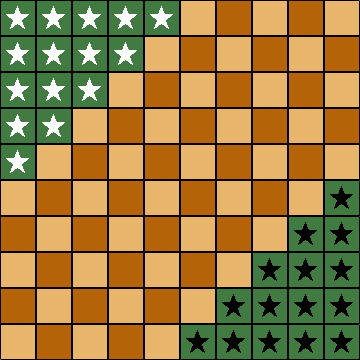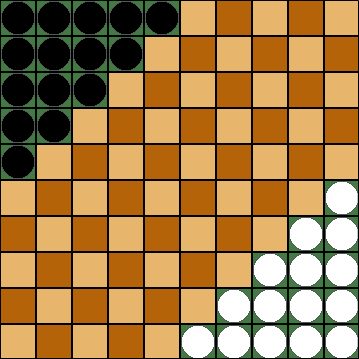|
Halma Help | |||||||||||
DescriptionInstructionsObjectiveMove all of your pieces across the board into your camp before your opponent does. In the normal case, you win by getting all of your pieces into your camp before your opponent gets their pieces into their camp. However, if your opponent leaves some pieces sitting in your camp, you can still win by filling all of the spaces in your target camp that your opponent isn't occupying.Rules
|
| • | • | |||
 |
• |
|
||




